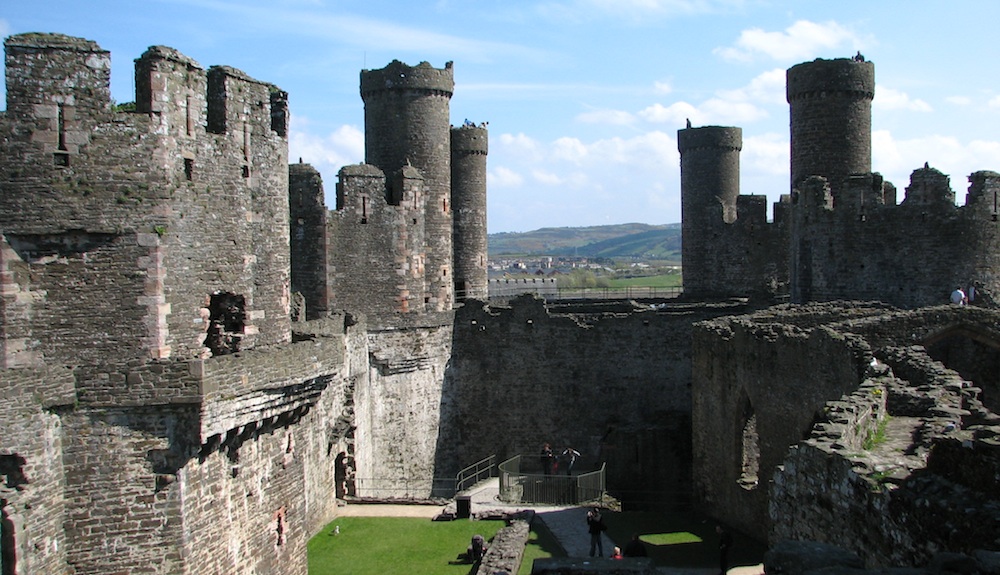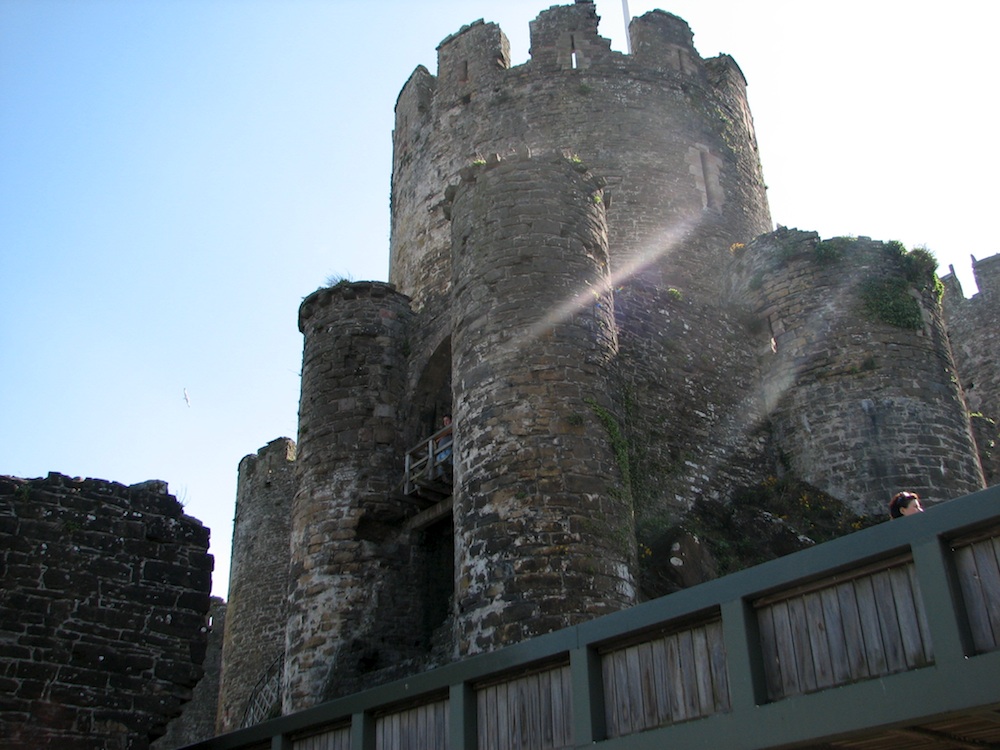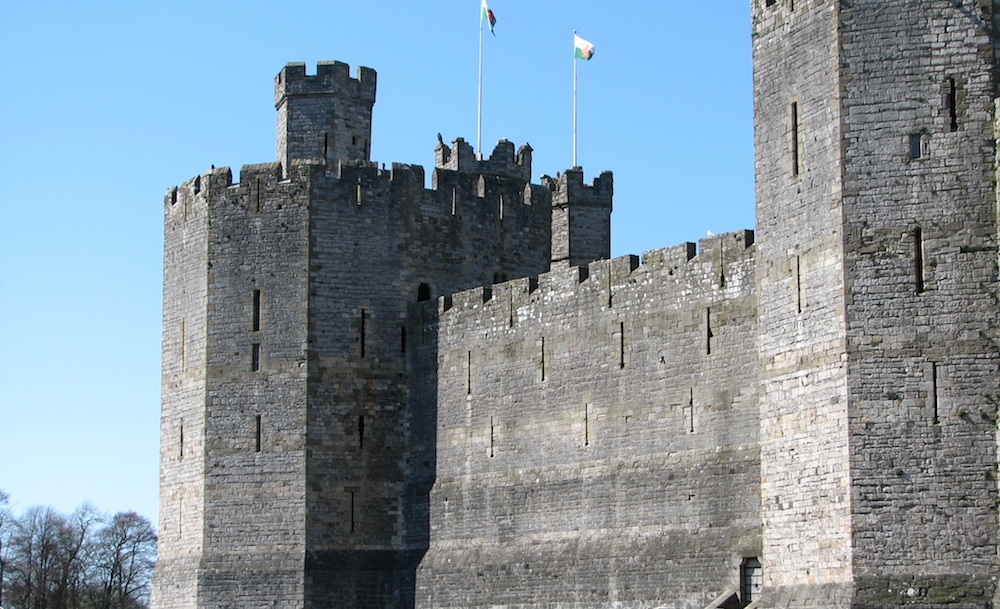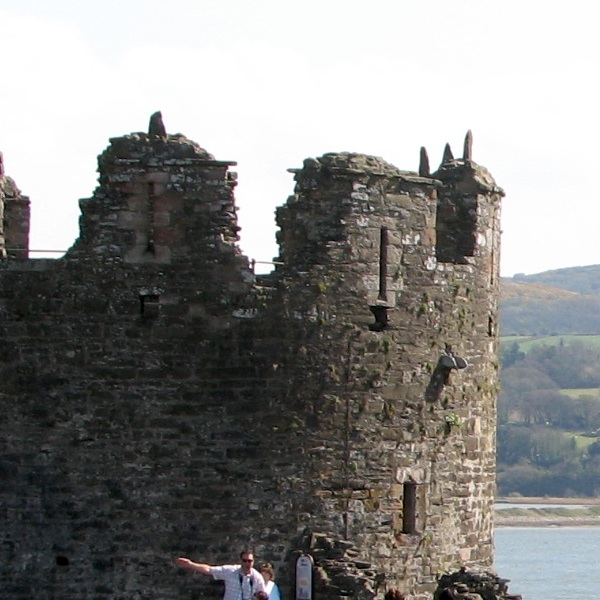
In The Mason of New Orleans, Martin, our titular character, builds a castle. (Well, sorta. It’s a bit more complicated.) To write about that (or write about it well, at least), it makes sense that I’d want to know something about castles and how they’re built. Fortunately, I lived in England for four years, and, being a lover of ruins and history and fortifications, I visited a lot of castles. Let’s have a look at one of them.
My poster child for this excursion is Conwy castle in northern Wales—but the competition was stiff. Caernarfon? Beaumaris? Caerphilly? Dover? Bodiam? Chepstow? Warwick? You can hardly swing a cat in the UK without hitting a castle (that’s rough on British cats)—and a lot of them are Really Cool. (You might think any castle would be Really Cool, and you’d be right. But there are sooo many in the UK that you eventually become discriminatory.) By the way, if you’ve ever read David Macaulay’s excellent book Castle, the fictitious castle in question is closely based on Conwy. The floorplan isn’t the same, but all other aspects look more like Conwy than any of the other castles in the region.

Edward I built Conwy in the 1280s as part of a program that made northern Wales the world’s undisputed mecca for castle visiting. He and his predecessors had been struggling with the Welsh for, well, ever, and Edward eventually decided that building a bunch of the world’s toughest and most outlandishly expensive castles—in hostile territory—would be cheaper and easier than the wars he’d waged so far in the effort. As an observer of how castles are built, this is significant for two reasons:
- First, this was at the absolute peak of the castle’s technology, and most of these castles were built from the ground up instead of modified from older castles. These are the platonic ideal of the castle, built by people starting from scratch and using every technology and trick in the book. Beaumaris, in particular, looks more like the castle a modern D&D player would create than anything on earth. You can practically see the graph paper grid on the ground.
- Second, Edward was, for all intents and purposes, the evil overlord in this scenario. And that’s why I picked Conwy: It’s the most imposing and overlordish of the lot.
When I call northern Wales a mecca, I ain’t joking. The castles were built densely enough so that they could reinforce each other—within a day’s travel, or about 20 miles. In many cases, you can stand on a tower in one of them and see one or more of the others. Edward’s building program was so successful that two of the castles—Caernarfon and Beaumaris—were never completely finished. They were awesome enough to cow the rather fierce Welsh even in an incomplete state.
And that was no accident: These castles were built to impress as much as defend. Caernarfon’s angled (not round) towers and striped stonework was deliberately chosen to resemble the walls of Constantinople—because Constantinople those days was associated with the Romans, the only group who had previously subjugated the Welsh. (This fact implies that your 13th-Century Brit on the street had some idea of what Constantinople’s walls looked like, which in itself is an interesting factoid.)

In Conwy’s case, check these out:


Conwy isn’t just huge and tall and dark and imposing. Although they’re now weathered down to near-invisibility, when it was built every single crenellation was topped with vicious-looking stone spikes. That’s right: Edward put spikes all over this castle just to make it look extra mean. You see that sort of thing in fantasy all the time, but it’s pretty darn rare in the real world. Most castles are like battleships: Imposing, but utilitarian. See what I mean about the evil overlord thing?
Whew! This has been a long post, and I’m barely getting started. I think I’m going to break it here, and come back with the rest in my next post!
